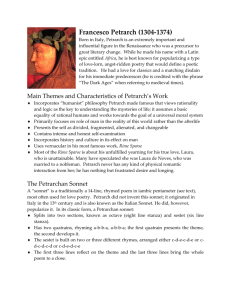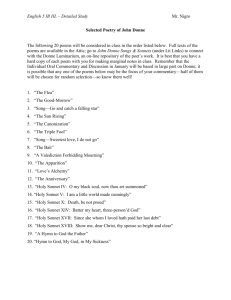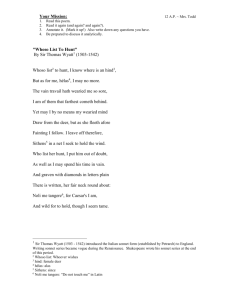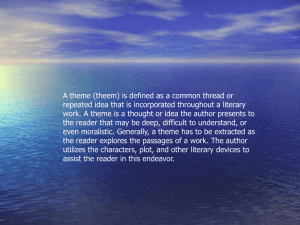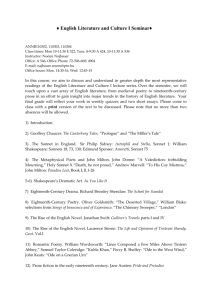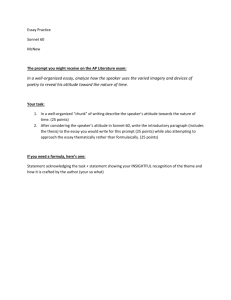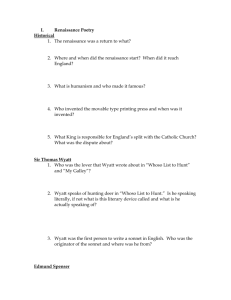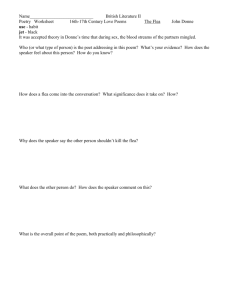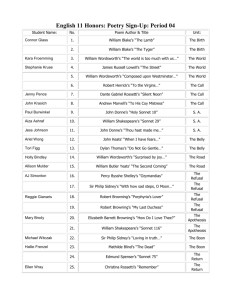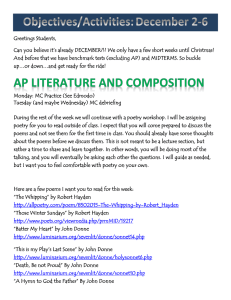File - Dr. Daniel Harrold
advertisement
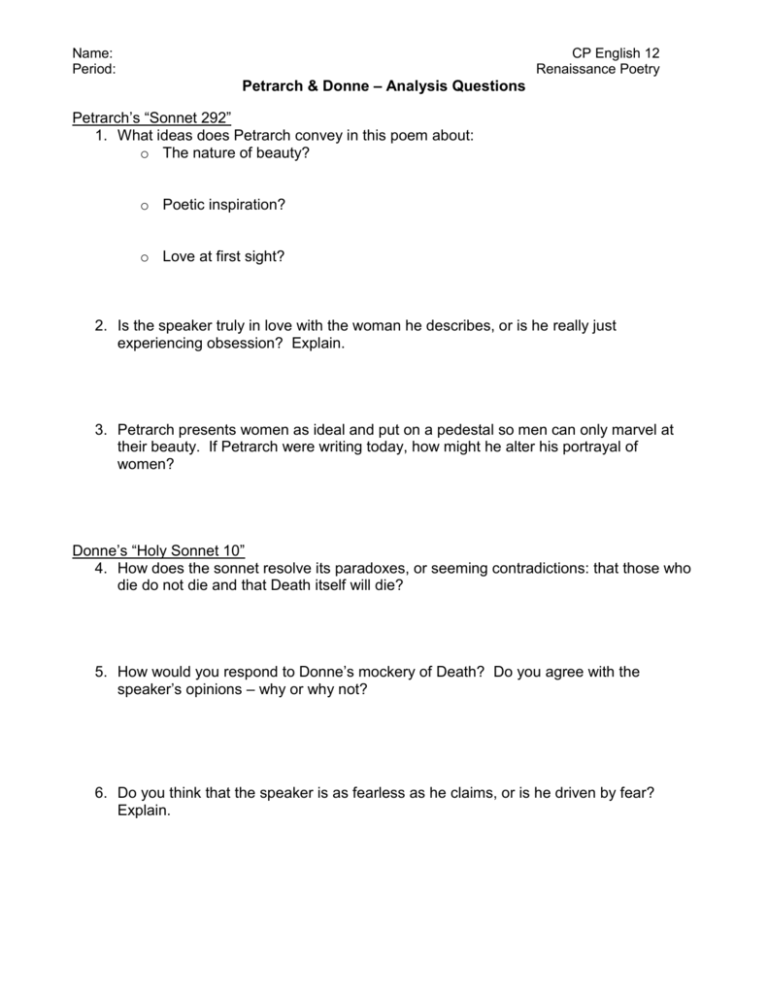
Name: Period: CP English 12 Renaissance Poetry Petrarch & Donne – Analysis Questions Petrarch’s “Sonnet 292” 1. What ideas does Petrarch convey in this poem about: o The nature of beauty? o Poetic inspiration? o Love at first sight? 2. Is the speaker truly in love with the woman he describes, or is he really just experiencing obsession? Explain. 3. Petrarch presents women as ideal and put on a pedestal so men can only marvel at their beauty. If Petrarch were writing today, how might he alter his portrayal of women? Donne’s “Holy Sonnet 10” 4. How does the sonnet resolve its paradoxes, or seeming contradictions: that those who die do not die and that Death itself will die? 5. How would you respond to Donne’s mockery of Death? Do you agree with the speaker’s opinions – why or why not? 6. Do you think that the speaker is as fearless as he claims, or is he driven by fear? Explain. Name: Period: CP English 12 Renaissance Poetry Art Analysis 1. Describe the scene in the painting. How can the woman’s feelings relate to those of the speaker’s in Petrarch’s “Sonnet 292”? 2. The writing on the tombstone beneath the woman reads, “I am the Resurrection and the Life.” The tombstone near the bottom reads, “Resurgam,” meaning in Latin, “I will rise up again.” How do these carvings relate to Donne’s “Holy Sonnet 10”? 3. The title of this painting is “The Doubt: Can These Dry Bones Live?” What do you think the woman is pondering? How do you think each speaker of the two poems would respond? Directions: Write an epitaph (inscription in memory of the buried) for Death that supports each speaker’s opinion about death on the headstones. Petrarch’s “Sonnet 292” Donne’s “Holy Sonnet 10”
